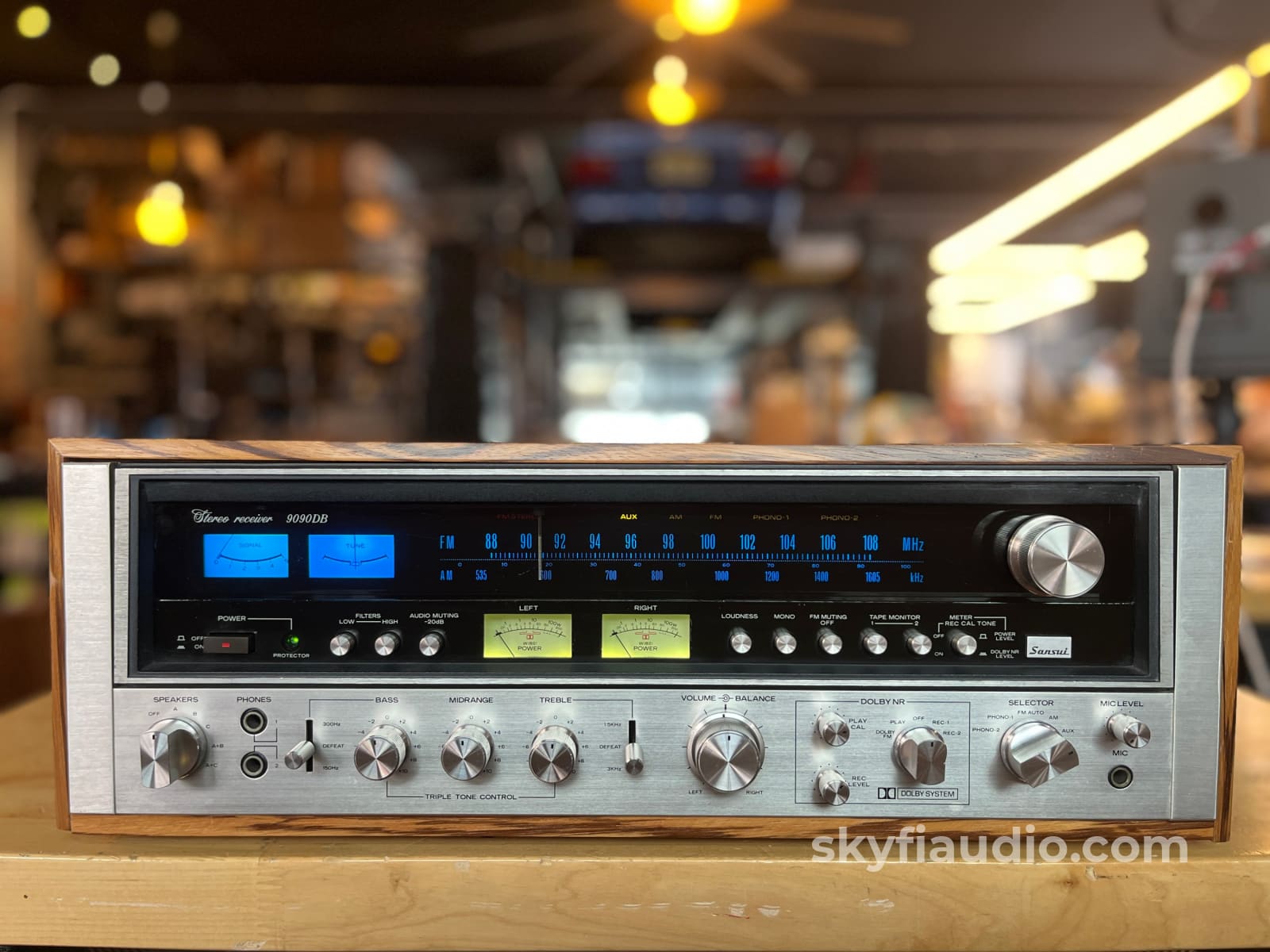
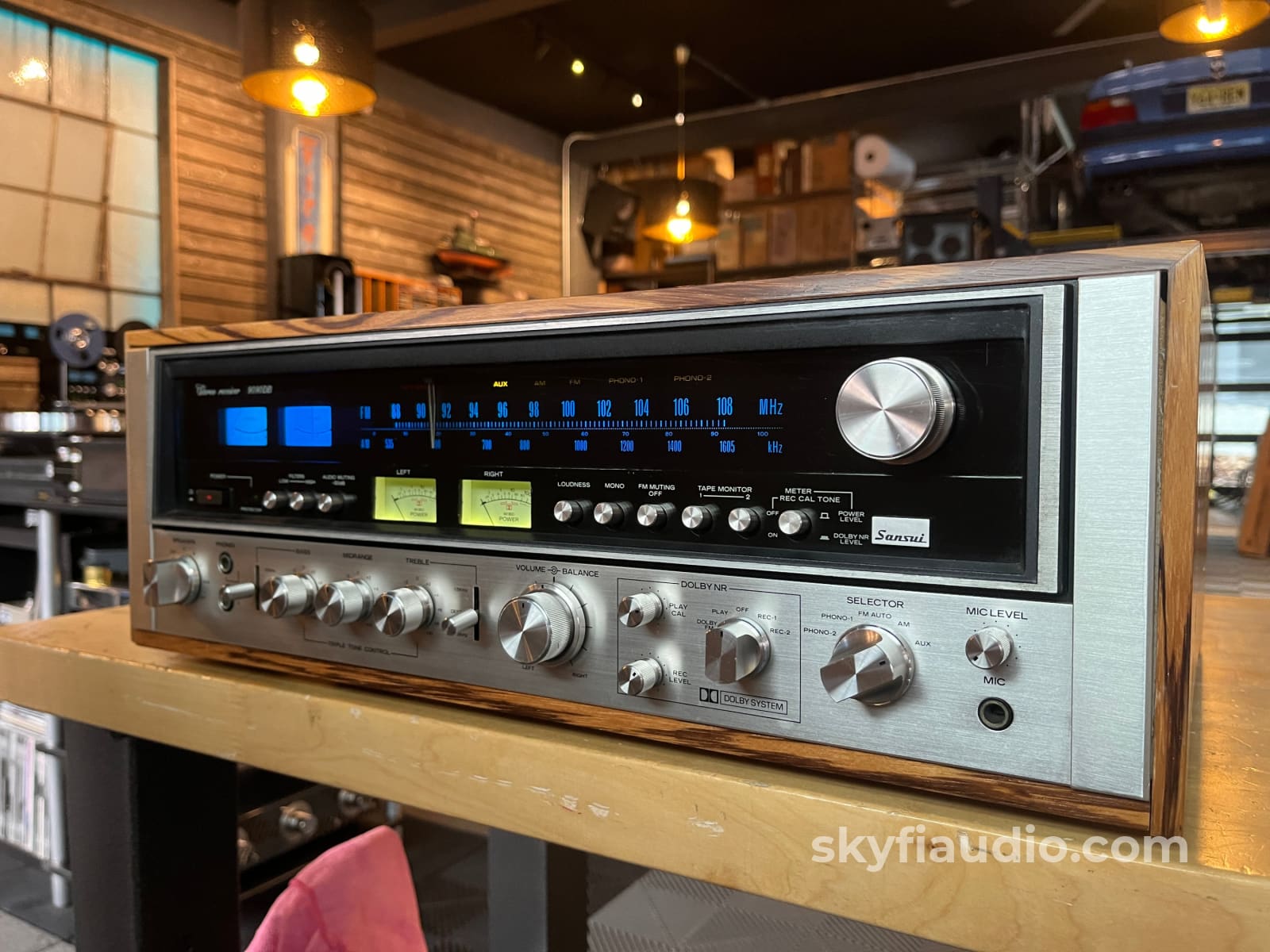
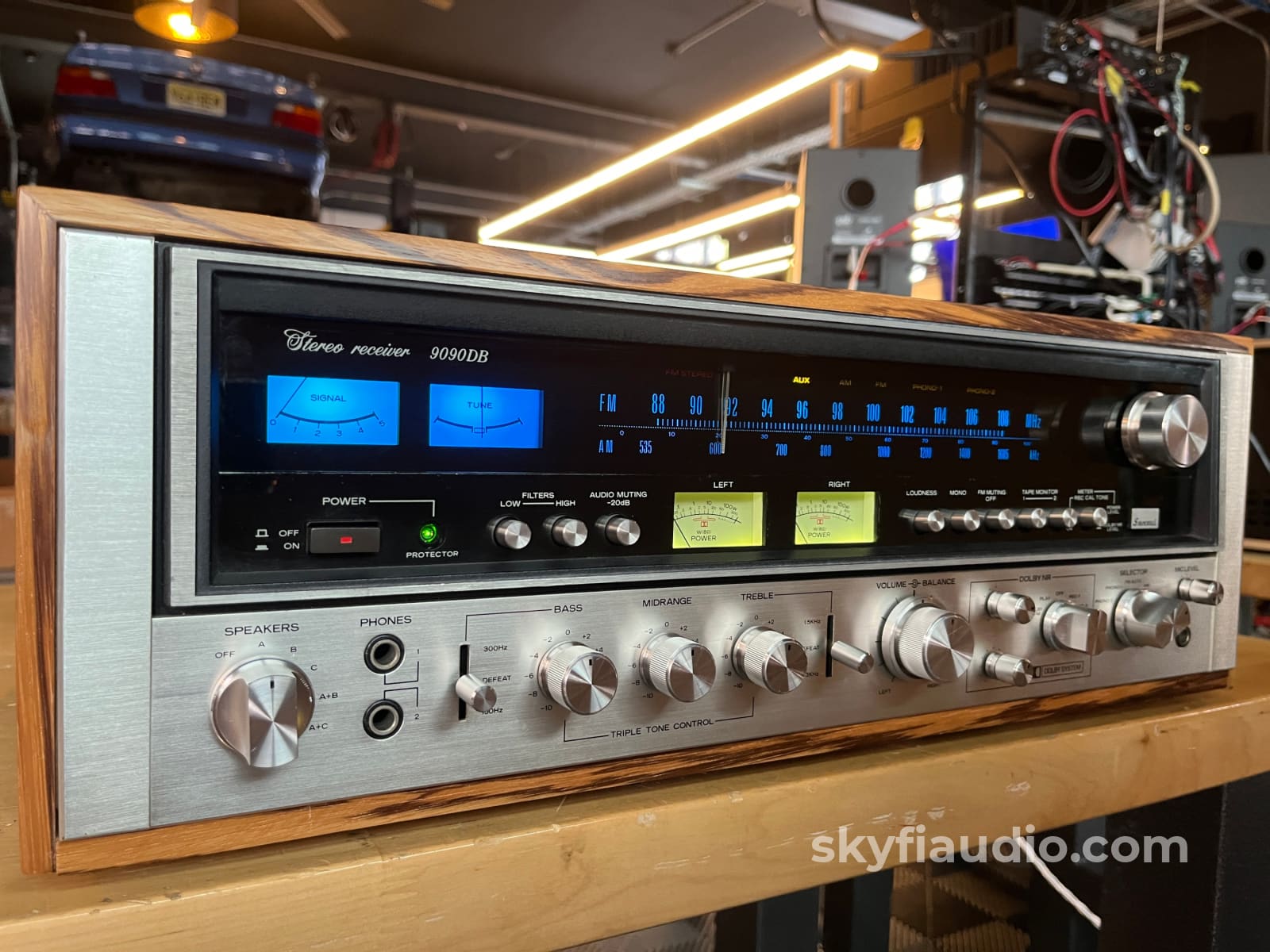
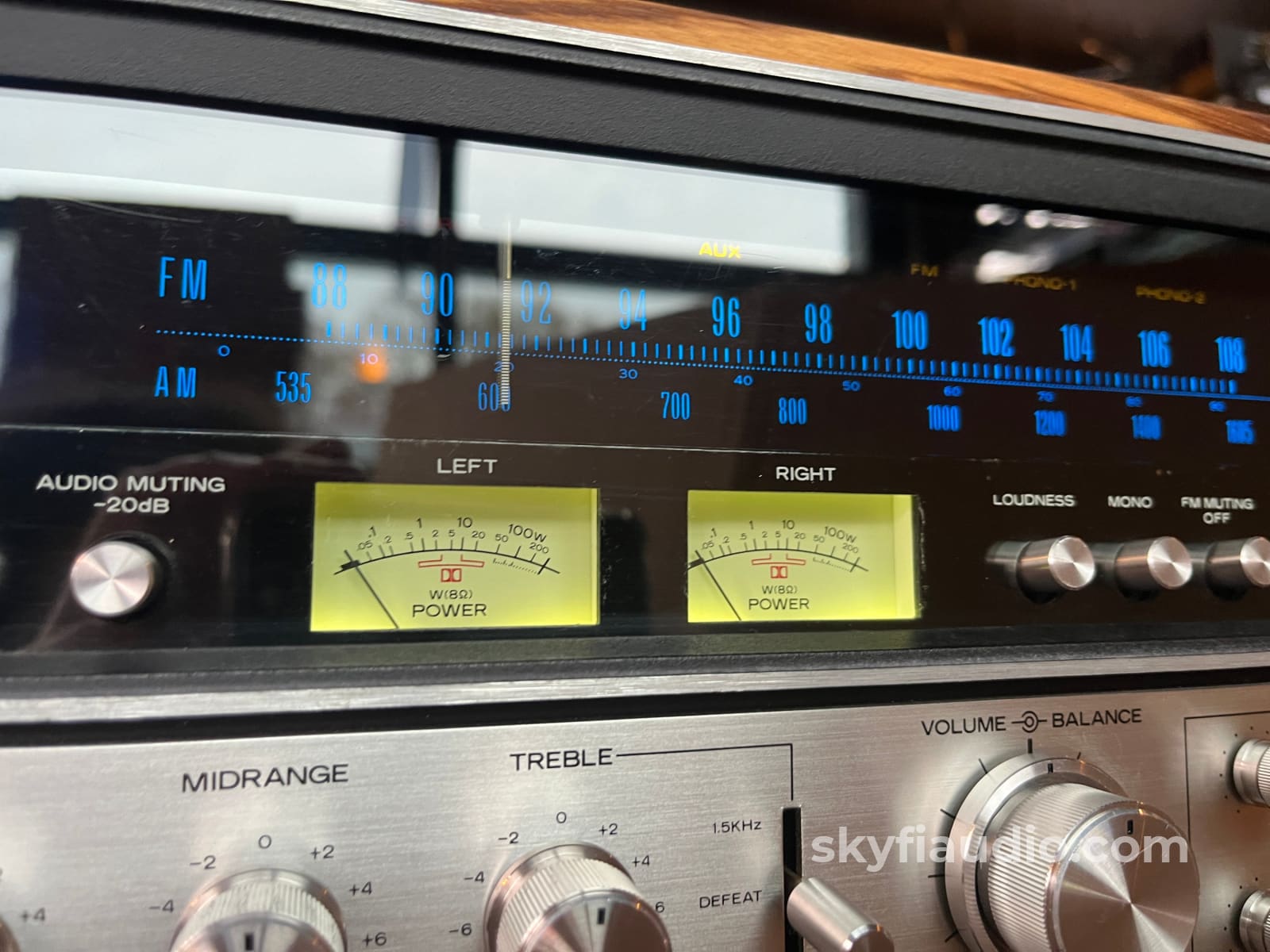
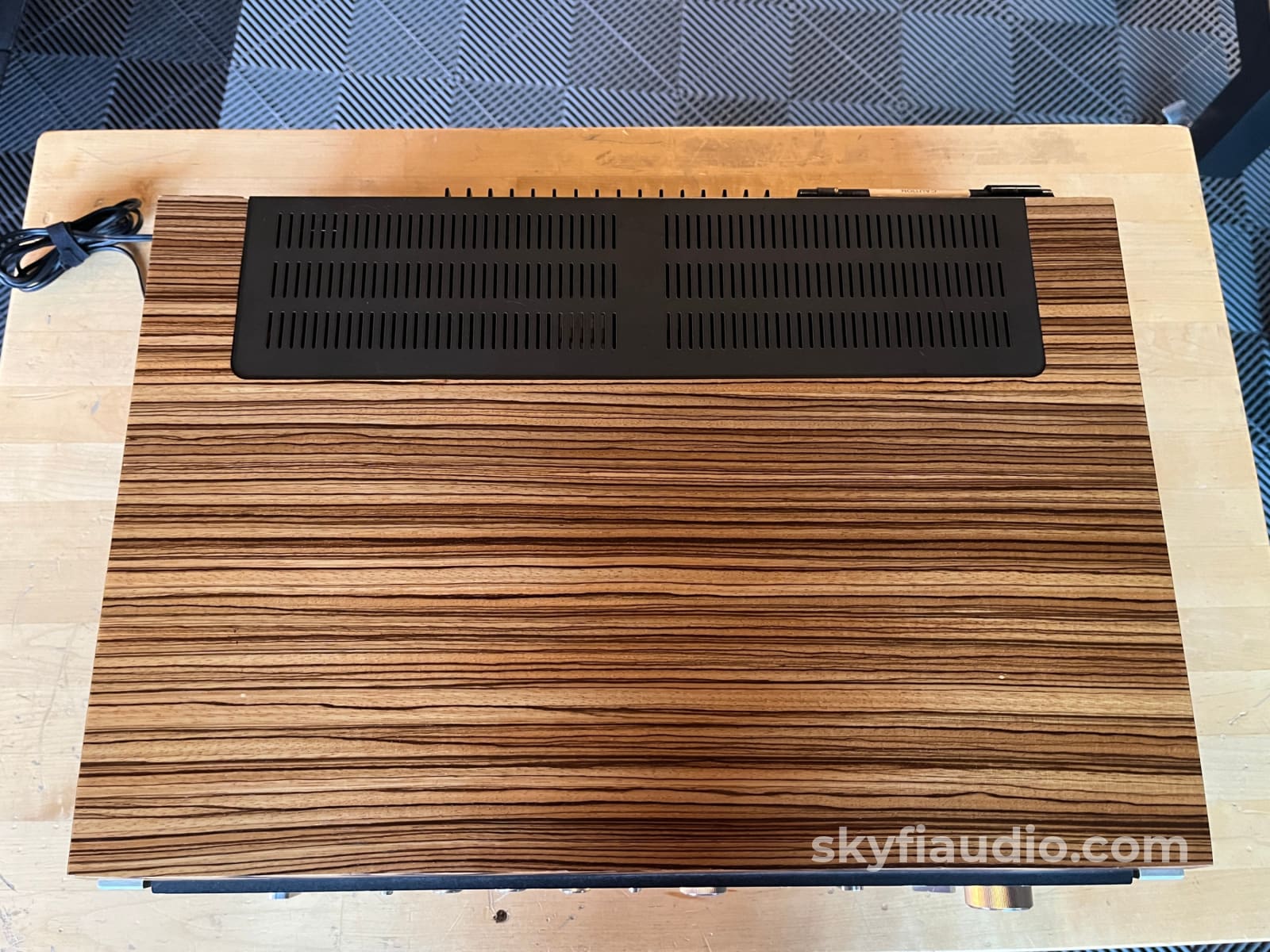
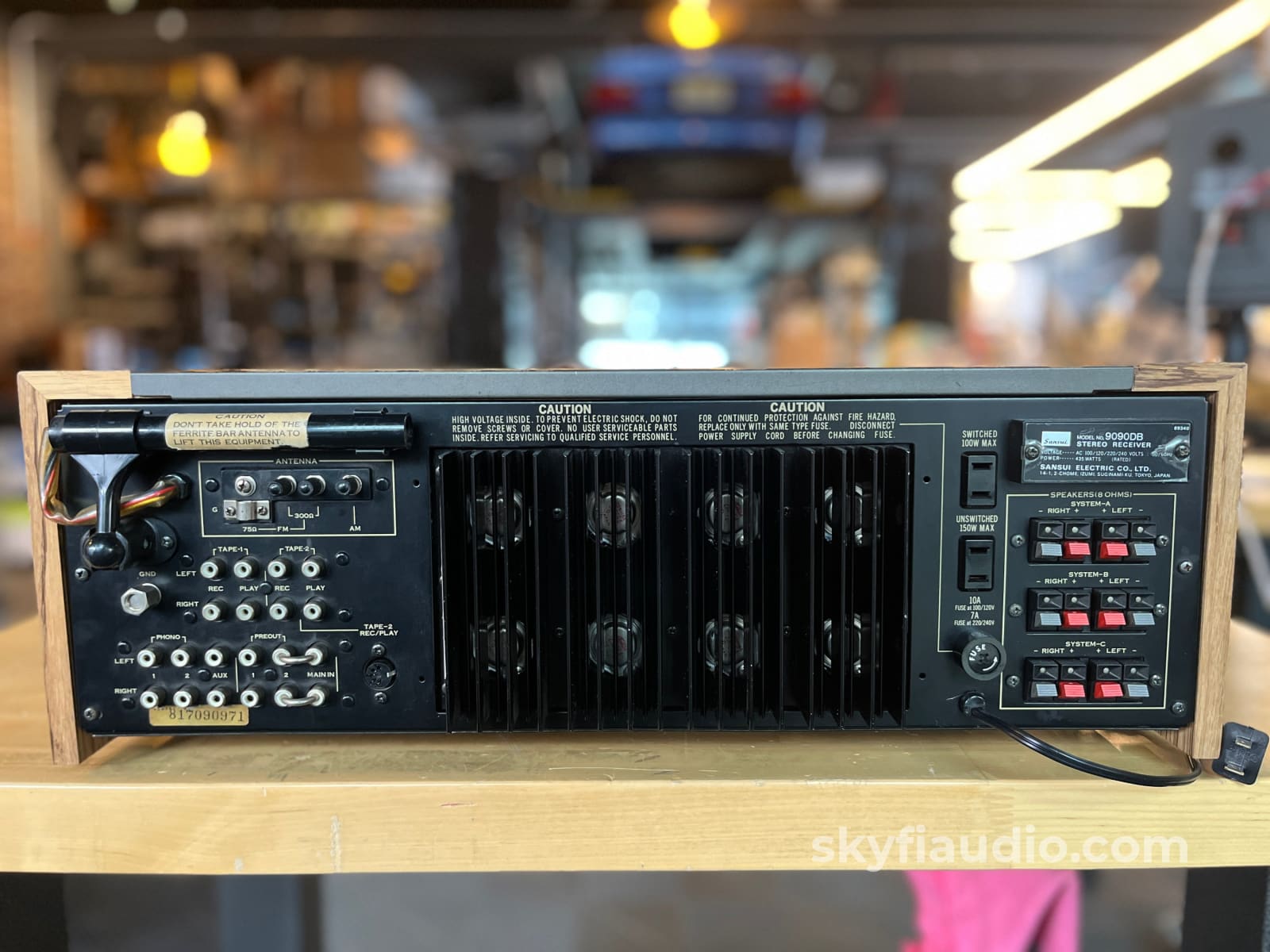
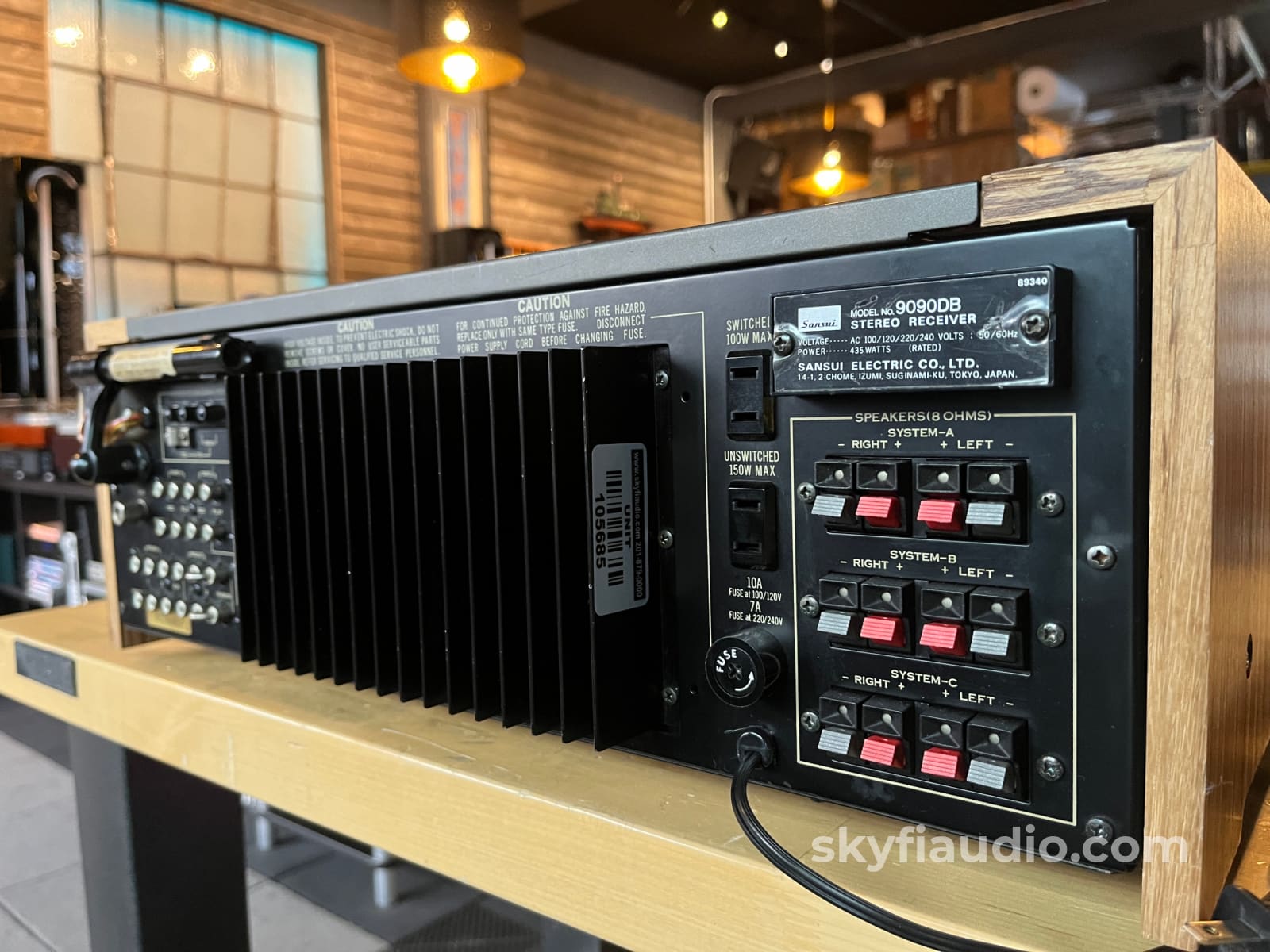
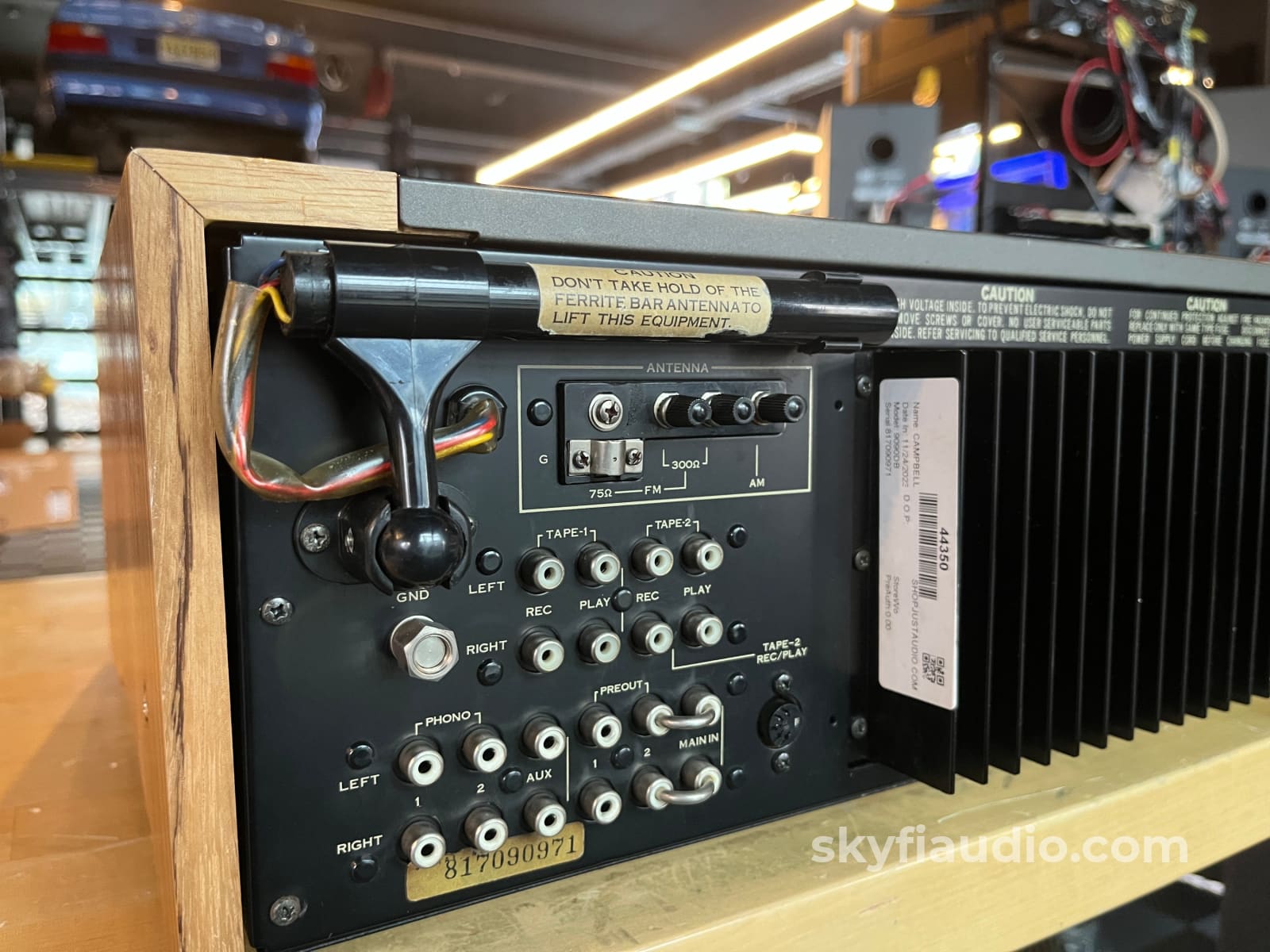
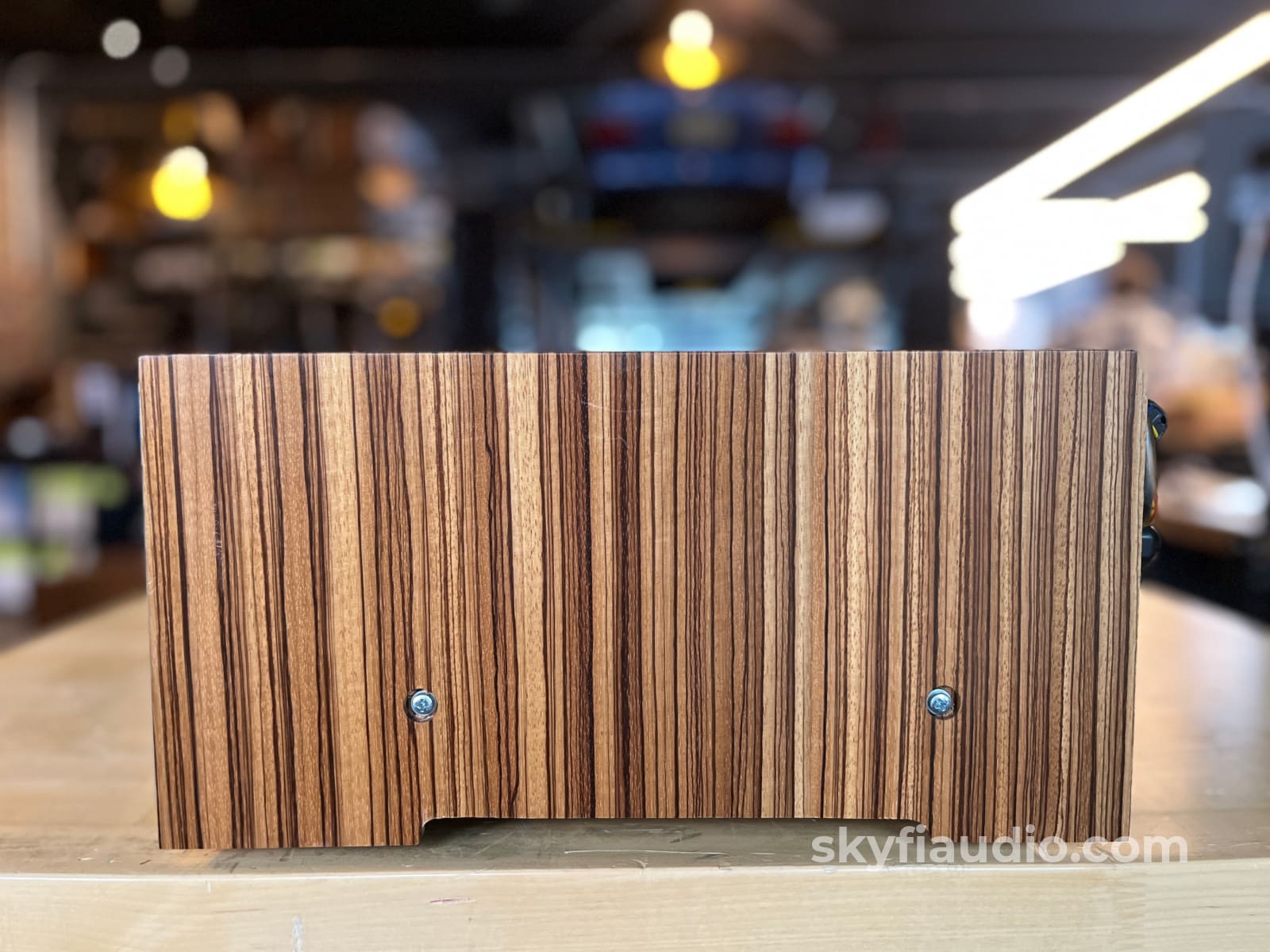
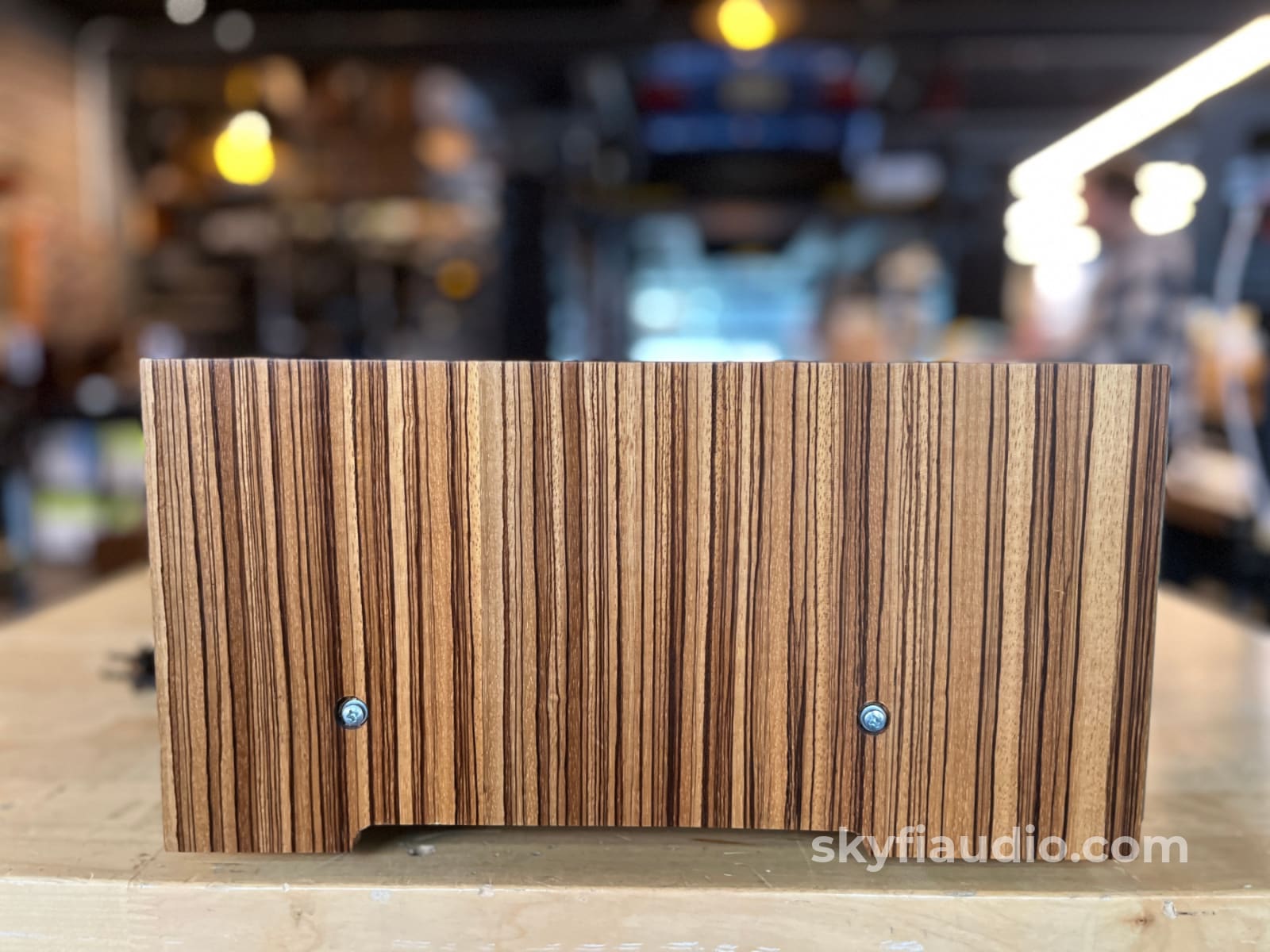

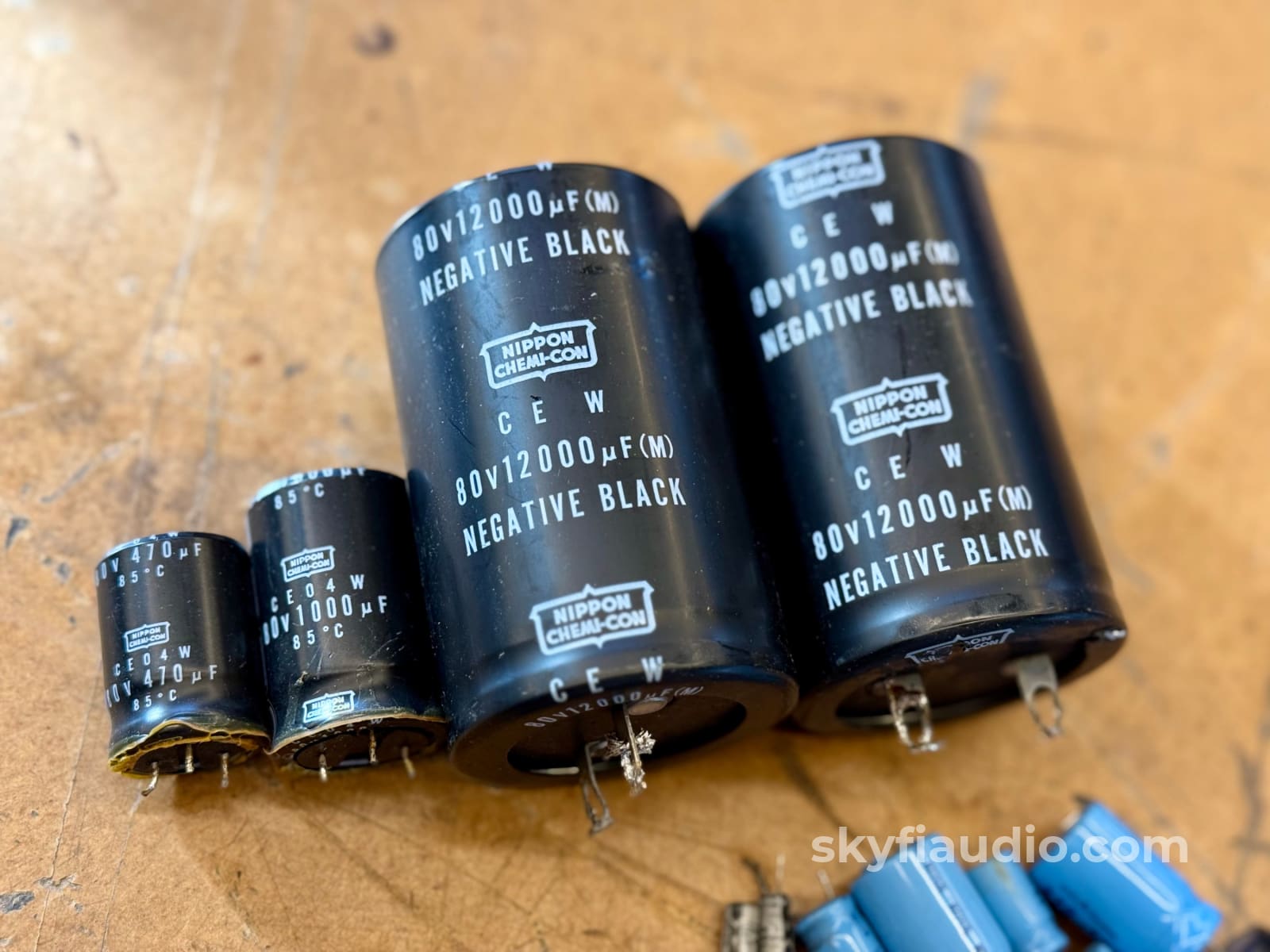

Sansui 9090DB Stereo Receiver w/Zebra Wood Cabinet
Free Shipping on Most Electronics - Excludes Speakers and Items Requiring Freight - Contiguous U.S. Only
Pickup currently unavailable at SkyFi 479

Sansui 9090DB Stereo Receiver w/Zebra Wood Cabinet
SkyFi 479
479 South Broad Street
Glen Rock NJ 07452
United States
General:
The Sansui 9090DB is a classic 1970's monster stereo receiver with 125 watts per channel of clean power on tap. This model gets lots of phrase for its sound quality, and great build.
It also has an amazing design with its large metal knobs, backlit tuning dial, and VU meters. This specific receiver also benefits from a couple of custom options such as a custom-made solid zebra wood case, and LED lighting.
This particular 9090DB received a restoration performed by "Just Audio" in Maryland where many of the main capacitors were replaced adding to the reliability.
SkyFi Cosmetic Notes:
This unit is fitted with a custom zebra wood cabinet. The wood surfaces show minor blemishes. The faceplate and knobs show light wear. The lighting was converted to blue LED.
SkyFi Technical Notes:
This 9090DB was recapped and serviced by Just Audio in November of 2023. The power cord and antenna bracket were also replaced at the same time.
Ownership:
Second Owner
Connections:
RCA, Speaker Terminals, AC outlets, Antenna Outputs
General Sound:
Smooth, uncolored, undistorted natural and clean
Cosmetic Condition:
8/10 = Very Good. Excellent front faceplate, one minor flaw on chassis side or top. See our detailed rating description here.
Working Condition:
Working perfectly and tested in our lab and listening room.
Included:
Just the unit and power cord.
Packing:
Will be packed using our highly developed in-house process and custom packing materials.Original MSRP:
$900.00
Specs:
Tuning Range: FM, AM
Power Output: 125 watts per channel into 8Ω (stereo)
Frequency Response: 10 Hz to 30 kHz
Total Harmonic Distortion: 0.1%
Damping Factor: 30
Input Sensitivity: 4mV (mic), 2.5mV (MM), 150mV (DIN), 150mV (line)
Signal to Noise Ratio: 70 dB (MM), 80 dB (DIN), 80 dB (line)
Channel Separation: 50 dB (MM), 50 dB (line)
Output: 150mV (line), 30mV (DIN), 0.775V (Pre out)
Dimensions:
21.26" x 7.16" x 15.63" (540 x 182 x 397mm)
Weight:
50 lbs.
Approximate Age:
1976
Link to Manual:
Click Here
Recommended Cables:
Kimber Kable - RCA Interconnects - Better
Kimber Kable - RCA Interconnects - Best
Kimber Kable - Speaker Cables - Better
Kimber Summit Series Monocle XL Speaker Cables (PAIR) - Best
Testing Process:
We start with a visual inspection of all internal components to make sure that there are no signs of heat stress or damage. Capacitors are checked for telltale signs of predictive failure including bulging, shrunken wrappers, or physical leakage. We also inspect the PCBs for discoloration from resistors or transistors that may have been running hot. On vintage units we often spot check select capacitors for value and ESR.
If the amplifier passes visual inspection, we move on to a controlled power on sequence using a Sencore safety analyzer to monitor current draw in real time. Once the amplifier is determined to be safe to operate, we connect it to full AC mains for function and power testing. We connect the speaker outputs of the amplifier to a Sencore PA81 Power Analyzer which acts as a dummy load, DC offset monitor, and oscilloscope interface. We start with a low level 1 KHz test signal at the amplifier's input and slowly increase its amplitude while monitoring the output on an oscilloscope for signs of noise, clipping, distortion, or improper channel balance. We continue increasing the signal level until the amplifier reaches clipping.
At this point we take an output power measurement and compare it to the spec sheet of the amplifier to verify proper performance. If the device under test has both balanced and single ended inputs they are both tested at this time.
We finish off the bench evaluation with a 1 KHz square wave check and a 20 Hz to 20 KHz sine sweep to assess the amplifier's frequency response characteristics.
This battery of tests will usually reveal if the amplifier has any issues that need further attention.
Before the device leaves the bench, we perform a listening test with actual music using a variety of preferred test tracks. Our benches are outfitted with familiar monitor speakers which help us identify inconsistencies that will not always show up on our test gear. The main things that we are listening for are hum or noise with no signal present, proper center image, clicks, pops, or any other obvious undesirable audio characteristics.
If the unit passes all of these tests it is moved to our long term testing rig where we simulate real word operating conditions for 6-8 hours minimum. This allows us to monitor the unit for signs of thermal runaway or intermittent issues that only crop up when the unit has fully come up to temperature.
Choose options













